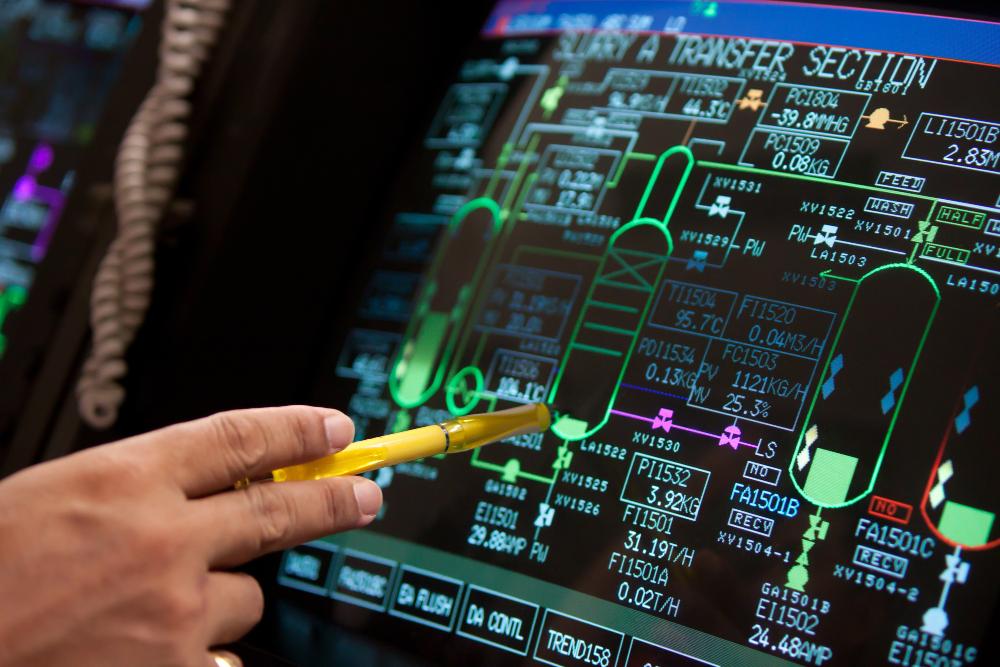An Introduction To Control Systems And Their Applications
Control systems quietly power and optimize processes that impact modern everyday living. From maintaining safe aircraft flight to enabling efficient manufacturing, control systems help monitor parameters, automatically adjust inputs, and so on to achieve desired results. They’re deemed useful in various applications.
This beginner’s guide will provide an overview of what control systems are, various system configurations, practical applications across various industries, and other helpful info about the subject like ControlLogix PLC’s. Read on to learn more.
Control Systems 101
At its core, a control system manages and commands the behavior of other devices or systems. It consists of an interconnected set of devices like sensors, actuators, controllers, and software that work together to regulate and maintain control of a process.
Control systems utilize feedback loops and algorithms to self-correct deviations from desired operations. This enables automation, stability, accuracy, and reliability without constant human intervention. They feature detection, computation, and actuation to adjust real-time inputs based on variable outputs.
Key Components Of Control Systems Architecture
While control system designs vary based on the process, most share common architectural components:
- Sensors: These critical components measure and collect real-time data on temperature, pressure, flow rate, and other physical parameters that need monitoring and controlling. Sensors serve as the inputs, providing data signals to the controller.
- Controller: Known as the brain, this analyzes data signals from the sensors and computes the appropriate input to attain the desired output. It implements control strategies through algorithms and programming.
- Actuators: These output devices execute the physical actions and changes to affect the process based on commands from the controller. Actuators convert control signals into physical movement.
- Software: Provides the logic, protocols, control strategies, algorithms, programming, and digital signal processing to the controller. It enables real-time monitoring, data analysis, and input instructions.
- Feedback Loop: This continual flow of information on process operation from sensors allows the control system to self-regulate by comparing the actual measured value to the controller setpoint. It is the core enabling automation.
Configurations Of Control Systems
There are various configurations of control systems based on process needs:
- Open Loop Control: The simplest design with no feedback path and pre-defined control inputs. It doesn’t account for disturbances or variations. Uncommon in practice.
- Closed Loop Control: Also called feedback control, it contains self-correcting feedback loops from sensors and actuators. Continually adjusts inputs to meet desired output.
- Feedforward Control: Measures known and measurable disturbances, taking preventive control actions before the disturbance affects the system. Does not rely solely on feedback. Used alongside feedback control.
- Adaptive And Intelligent Control: An emerging approach using machine learning, artificial intelligence, and fuzzy logic to enable more autonomous, self-optimizing systems that adapt to changing conditions.
Applications Of Control Systems
Control systems enable automation, stability, and precision across industries, such as smart living and others. Some examples include:
- Transportation: Advanced cruise control, transmission systems, anti-lock brakes and flight control systems on planes and ships depend on sophisticated control systems to detect slips, adjust flaps, and navigate autonomously. Spacecraft and self-driving cars also employ them.
- Manufacturing: Systems control product quality, safety, and efficiency in factories. Programmable Logic Controllers monitor temperatures, material flows, and pressures in processes. Robotics on assembly lines are directed by control systems.
- Energy: Load frequency control systems balance power generation with demand. Renewables like wind and solar also utilize maximum power point tracking control systems to optimize output. Nuclear reactors are regulated by critical control systems.
- Chemical: Control systems govern reactors, boilers, and other units to maintain ideal conditions by manipulating flows, temperatures, and pressures. They prevent disasters through shutdown procedures.
- Aerospace Control: Flight control systems like autopilots, gyroscopes, and inertial guidance systems allow aircraft to constantly detect orientation and environmental conditions to adjust for turbulence, navigation, and safe landing.
- Home Climate Control: The humble thermostat uses a temperature sensor, controller, and heating/cooling actuators to maintain comfort levels. Smart thermostats take this further by optimizing temperature and humidity autonomously.
- Home Appliances: Refrigerators, ovens, dishwashers, and washing machines all incorporate simple control systems to regulate operation. Sensors monitor temperature, soil levels, moisture, and timers while actuators adjust heating, cooling, and cycles accordingly.
- Automobiles: Modern cars contain over 100 small control systems for functions like fuel injection, transmission, stability control, adaptive cruise control, parking assist, and more. These create a smooth, safe driving experience.
- Phones And Electronics: Smartphones have MEMS motion sensors allowing screen rotation control. Their batteries are monitored to prevent damage. Circuits are regulated to manage electrical flows and prevent overheating.
- Smart Infrastructure: Traffic lights, rail networks, and city power grids all have networked control systems to monitor flows, respond to demands, and prevent overloads or failures through timely inputs.
Challenges And The Future Of Control Systems
While control systems have fueled advancement across industries, limitations persist:
- Increasing Complexity: Highly complex, nonlinear and interdependent multivariable systems with unknowns are difficult to accurately model and control.
- Vulnerabilities: Interconnected systems mean individual failures can cascade. Control systems also face cybersecurity threats of hacking.
The future points towards more intelligent, optimized, and resilient control systems:
- AI And Machine Learning: To better account for uncertainties and complexity, both enable more autonomous self-optimizing systems needing less human input.
- New Sensors And Networks: More capable and compact sensors, along with wireless networks, will enhance monitoring and control capabilities.
- Modeling And Simulation: Improved system modeling, simulation, and emulation abilities allow for robust virtual testing of control systems before implementation.
While control systems have evolved from purely mechanical designs to sophisticated smart systems, challenges remain in designing robust, safer, and more resilient solutions that can reliably manage complexity and uncertainties in an autonomous manner. The field continues pioneering innovative control techniques like machine learning to optimize and adapt processes across domains.
Notable Innovations In Control Systems Technology
Control systems have significantly advanced over the decades, with several key innovations and technologies driving progress:
- Model Predictive Control (MPC): This advanced control technique utilizes dynamic process models and optimization to predict future behavior and calculate optimal control inputs accordingly. First developed in the 1970s and 80s, MPC enables enhanced performance.
- Programmable Logic Controllers (PLCs): Instead of traditional hard-wired controllers, PLCs use programmable software and allow easy reconfiguration. PLCs simplified control system design and enabled flexibility. They became ubiquitous by the 1990s.
- Human-Machine Interface (HMI): HMIs evolved control systems from purely analog to easy interaction with digital interfaces and visuals. Operating and monitoring became more intuitive. HMIs enable rapid user insights and control adjustments.
- Wireless Sensing And Actuation: Advancements in wireless technology allowed remote, distributed control over large or hazardous areas. Removed wired constraints and enabled modular and mobile systems.
- Digital Signal Processors: High-speed, real-time digital signal processing hardware and algorithms filtered noise, provided diagnostics, and extracted insights from sensor data.
- Artificial Intelligence And Machine Learning: Cutting-edge techniques like fuzzy logic, neural networks, and predictive analytics are making control systems smarter and more adaptive. This paves the way for greater automation.
To Conclude
The far-reaching impact of control system innovations is undeniable. These behind-the-scenes technical marvels have fueled the automation that underpins modern life and progress.
While control systems face evolving challenges today, the field continues pioneering advances leading to smarter, more interconnected and autonomous systems that promise to further enhance process efficiency, safety and machine capabilities into the future.







0